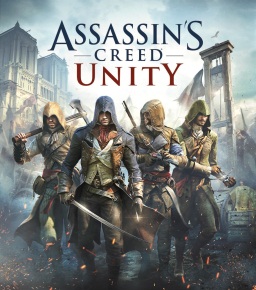 Last month at E3 in California, game maker Ubisoft found itself in trouble after addressing concerns about the absence of female game characters in its latest online edition of Assassin’s Creed (ironically called Unity), as well as Far Cry 4. The company justified the moves by indicating that it would have taken too much time and money to add a female character.
Last month at E3 in California, game maker Ubisoft found itself in trouble after addressing concerns about the absence of female game characters in its latest online edition of Assassin’s Creed (ironically called Unity), as well as Far Cry 4. The company justified the moves by indicating that it would have taken too much time and money to add a female character.
Alex Amancio, Creative Director, has been quoted as stating that to add a female character would require twice as much animation and voice work, plus double the visual assets, and thus money, since the assassin characters are customizable.
The Internet rallied support for the fairer sex over the issue, even creating a Twitter hashtag, #womenaretoohardtoanimate, where gamers (male and female) voiced their anger about the decision, but more so about the reason given for it. One female gamer Tweets that she was just about to buy the game but “I guess it’s too hard for me to buy.” One male gamer jokes sarcastically that, “if women didn’t have 8 arms and 11 legs, they’d probably be easier to animate.”
Despite the fun being had with the issue, it seems that many are taking it quite seriously. Some, however, are coming to Ubisoft’s defense. The most cited interview isn’t directly related to this situation, but provides arguments in favour of Ubisoft. It hails from Frozen’s Lead Animator Lino DeSalvo, who spoke of how difficult it was to create two female lead characters, requiring that various emotions be animated to reflect the more complex female face and mannerisms. “Historically speaking, animating female characters are really, really difficult, because they have to go through these range of emotions, but you have to keep them pretty and they’re very sensitive to — you can get them off a model very quickly,” he is quoted as saying.
However, when you’re talking games like Assassin’s Creed and Far Cry 4, they’re a far cry (pun intended) from a flick like Frozen. Characters are more likely to lack emotion than show it. And when they do, it’s hard to imagine that the focus on actions and movements can’t be fairly unisex.
Perhaps the better question is even if the extra voice and animation work did significantly add to the cost of producing the game, would it have been worth it in the end to please a large (and potentially growing) portion of your customer base? Or are most female players happy to enter a fictional world where they become a male assassin? After all, it’s hard to see how a female gamer pretending to be a 6” 4’ French assassin with presumably bulging muscles and a six-pack is all that different from a scrawny 13-year old pretending to be the same.
Some argue that as more female players enter the market, more attention will be paid to creating female protagonists. It seems, however, that females already make up almost half of gamers today. Others suggest that we need more female developer in order to address the needs of making female game characters more effectively. The implication is that male developers don’t understand how to make female characters; at least not as well as females would. It’s ludicrous to suggest.
In the end, game play is, of course, all about stepping out of a reality. Players become muscle-bound killers, mobsters, dragons, princesses, animals, robots, even mythical creatures. Given that, in the grand scheme of things, is being male or female really that important of a distinction? Clearly, those who are unhappy with Ubisoft’s justification think so.



